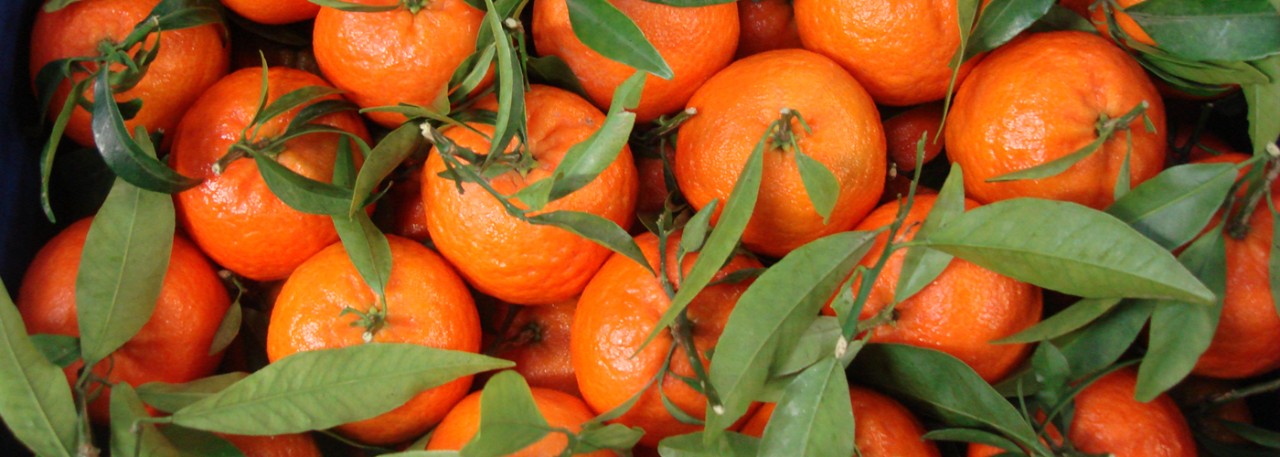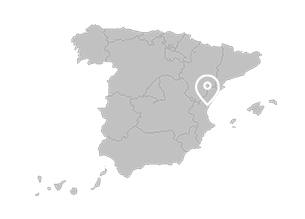.png.transform/rendition-xs/image_image%20(1).png)
Cítricos Valencianos PGI
Fruits of the orange tree (Citrus reticultata Blanco).
Tasting notes
The texture of the fruit should be yielding and not dry. It should not give off a strong, over-ripe smell and the flavor should be nicely balanced between sweetness and acidity.
Other notes
| Type | Variety | Diameter (Ø Mm) | Juice % |
| Satsuma | Clausellina, Okitsu, Owari | 54-74 Mm | 40 |
| Clementine | Arrufatina, Clementard, Clementina Fina, Clemenules, Esbal, Marisol, Orogrande, Oronules, Oroval, Tomatera | 54-74 Mm | 40 |
| Clementine | Hernandina | 54-74 Mm | 40 |
| Hybrid | Ellendale, Kara, Nova | 54-74 Mm | 40 |
| Hybrid | Fortune, Ortanique | 54-74 Mm | 40 |
| Navel | Lane Late, Navelate, Navelina, Newhall, Washington Navel | 70-96 Mm | 35 |
Production / Processing method
Irrigation systems are widespread in traditional citrus growing in the Valencian Community, where it takes place mainly in intensive plantations. The preferred trees are of small habit and are tended In specialized ways: these are very labor Intensive and call for a high degree of expertise on the part of the grower In addition to a thorough knowledge of crop and soil characteristics. For propagation, rootstocks are used of citrus species or their hybrids that are resistant to salinity, chalk and the major diseases that pose a threat to the fruit.
The PGI must only certify products that match quality categories "Extra" and "I" (namely, top quality fruit). The fruit Is picked working from the outer, lower part of the tree canopy towards the centre, where the best quality, ripest fruit is. Harvesting is largely done manually, and calls for great dexterity on the part of pickers, who are specially trained to do it.
The fruit must be prepared for the marketplace, in the case of both individual packaging and bulk consignments, in a way that ensures that it is well protected. It must always be dispatched at the optimal stage of development and ripeness for it to withstand transport, storing, preparation and packaging and arrive at its destination in a satisfactory state. It may only be packaged in formats authorized by the Regulatory Council: cases of 2.5 to 20 kg (5.51 -44.09 lb), and nets of one to four kilos (2.20 - 8.81 lb).
Geography / Relief and climate
The growing area includes areas of rich alluvial soils from the river basins that irrigate the Mediterranean coastal plains, lying between the coast and the mountain chains that border them. Citrus trees have become well acclimatized to the Mediterranean patterns of hot summers and mild winters, whose only risky element is the occasional frost.
Rainfall decreases from north to south, diminishing from 450 mm in northern Castellón to less than 300 mm in southern Alicante. This sparse, irregularly distributed rainfall means that irrigation systems have to be widely used in the growing areas.
Regulatory Council
Consejo Regulador de la IGP Cítricos Valencianos
C/ Guillem de Castro, 51, puerta 8
46007 Valencia
Tel: (+34) 963 154 052
info@citricosvalencianos.com
www.citricosvalencianos.com/
Sources:
The flavor should be nicely balanced between sweetness and acidity.


- /content/dam/en/icex-foodswines/images/products/fruits---vegetables/cítricos-valencianos-pgi/Cítricos%20Valencianos%20PGI%20carr1.jpg
- /content/dam/en/icex-foodswines/images/products/fruits---vegetables/cítricos-valencianos-pgi/Cítricos%20Valencianos%20PGI%20carr2.jpg

Valencia (Valencian Community)
